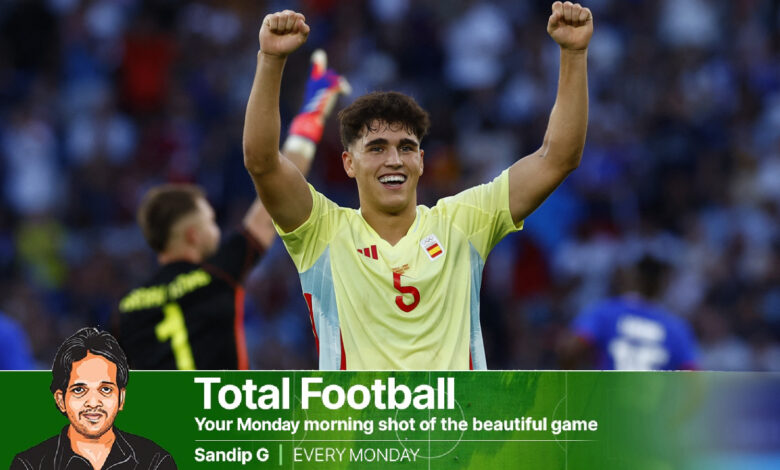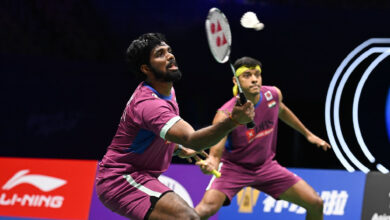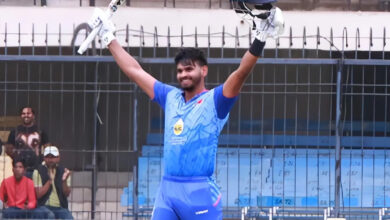Youth could be the flavour of upcoming European football season as clubs eye academy graduates to cut costs, add freshness and balance books | Football News

As suspense gripped the Olympics football final between Spain and France, as the refreshingly open game descended into chaos, a slender six-footer offered the antithesis, steady and serene, immune to the drama unfolding around him.When the seesawing game ended 5-3 in Spain’s favour, coach Santi Denia sought one face among his delirious wards, still glowing after 120 minutes of searing football, of Pau Cubarsi. Without his timely interventions, tidy and tactful defending, Spain wouldn’t have enjoyed the night as they did.
After Lamine Yamal at the Euro, another 17-year-old from Barcelona’s fabled La Masia left his stamp on a big game. He is no stranger to big nights. In the same city a few months ago, he had diligently marked Kylian Mbappe in a Champions League tie. Before that, he had Victor Osimhen in his pocket in Naples. A modern defender with the intuition of a deep-lying playmaker, a vast spread of passes, and the sturdiness of a classical centre-back, his former club manager Xavi says, “When Cubarsi has the ball at his feet, my heart rate doesn’t go up.” He would add: “His decision- making is exemplary, especially when you consider his age, but I tell you please do not consider his age.”
Two of his Barcelona colleagues shone as well, forward Fermin Lopez and centre-back Eric Garcia, 21 and 23, bringing the thrill back to watching a youthful Barcelona again this season. Their rise has been swift, but was not necessarily dictated the vision to hand out opportunities to youngsters, rather their shackled finances. According to ESPN, their squad cost is over €400m, which is more than double the La Liga-imposed limit. Years of mis-spending and hefty wages to players — want-away midfielder Frenkie de Jong gets €721,154 per week, for example — have crippled their finances. The alternatives were procuring post-peak players on free transfers or digging deep into the impeccable academy.
Gold medalls Alex Baena of Spain, Fermin Lopez of Spain and Jon Pacheco of Spain celebrate on the podium. (Reuters)
Not only Barcelona, a raft of clubs have found their finances tied to wanton spending due to league-regulated profit and sustainability rules (PSR). Teams would still find ways to pass the rules — like the increasing swap deals — but winds of austerity have swept leagues in Europe. So far, just 839 transfers have been made at an estimated £3 billion. Last season, Chelsea alone spent £ 2.5 billion. No transfer has yet to hit the three-figure mark this season, Tottenham’s £66.5 million splurge on striker Dominic Solanke being the most expensive deal, though the almost-done deal of Julian Alvarez’s £82m move from Manchester City to Atletico Madrid could eclipse it. Last season alone had four £75 million transfers.
All of this made academy products a valuable asset, in terms of blooding them in the senior side as well as selling them to balance the books, as sales of academy products are valued as pure profit. In the Community Shield fixture against Manchester United, league champions Manchester City fielded an unusually high number of academy graduates (four started). United, which has traditionally thrust academy players in their first teams, had experimented with a battalion of them in the pre-season, some of whom, especially 17-year-old left Harry Amass, had been promised more game time in the top flight too. Considering United’s injury-prone left-backs, he would not be reduced to merely cameo acts.
Going shopping
Some of Arsenal’s products — who are often sold and not retained, got rare exposure in pre-season friendlies while Chelsea, one of the biggest suppliers of talent in Europe, and Liverpool – the latter yet to make a transfer this season – too would raid their academy in search of hidden gems. Last season, Jurgen Klopp had summoned some of them, most notably Conor Bradley, Jarell Quansah, James McConnell, Jayden Danns and Bob Clark, with resounding success.
Arne Slot arrives from Feyenoord with a reputation of working with home-grown players. “It’s always nice for a club and team that young players come through the ranks. That always gives energy to a club. In the end, it’s all about the quality. If they continue doing well, there will be a fair chance that they will play,” he said in his first press conference.
At the same time, clubs had been fervently offloading some of their academy products so that they don’t end up violating the PSR ceilings. For example, Aston Villa, to balance the spending of nearly £150 million, has offloaded some of their promising youngsters to Premier League rivals for a combined cost of £40 million. Free-spending Chelsea, who have amassed pre-tax losses of £210 million in the last two years, have recouped close to £90 million selling players from Cobham. Everton, already docked points, and Newcastle United too are busy juggling with their expenditure and profit.
The pattern could see clubs overzealously push for trainees of other clubs — Manchester United is chasing Arsenal striker Chido Obi-Martin, who is only 16, for double the wages he is getting at the London club. Maybe, in the coming years, there could be an academy-nursed team like Alex Ferguson’s Class of 1992, or the 1995 batch of Ajax, or the Tiki-Taki-ans of the late aughts, just when it seemed the prevailing norms would conspire against the coincidence of an unearthly group of talents from the same school transforming into the nucleus of a champion side.
A disclaimer though: Not every academy graduate graduates into a top player. According to a survey, just about one out of 100 academy players end up playing top-flight football in Europe. Other risks lurk too — premature transfers could disrupt their growth pattern, early exposure and failure could shatter their morale and they could slip away. Nonetheless, youths could be the flavour of the season. Two 17-year-olds from Barcelona have already set the tone and mood.







